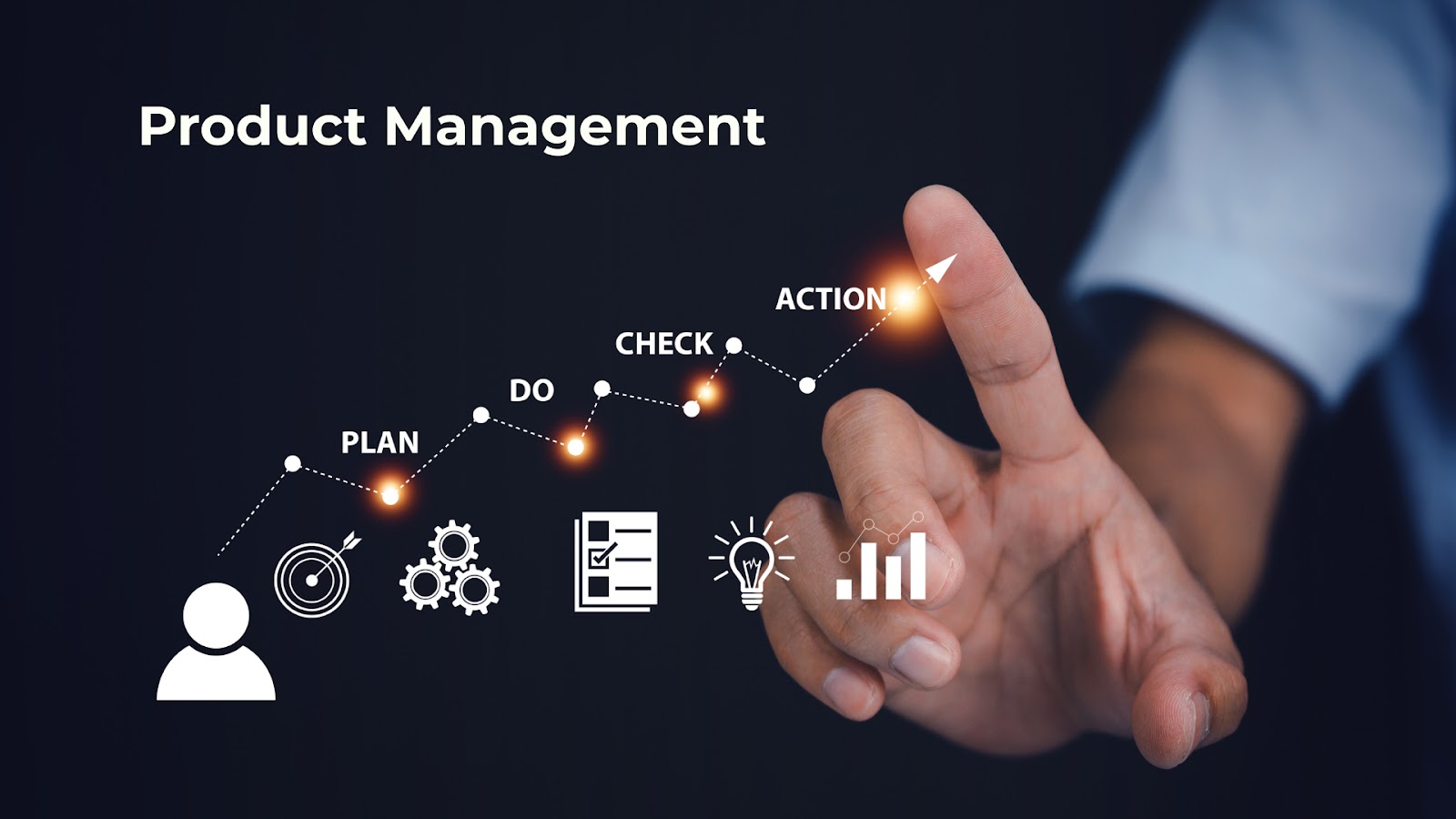Ecommerce, or electronic commerce, refers to the buying and selling of goods and services through the internet. The rise of ecommerce can be traced back to the early days of the internet in the 1990s. However, it wasn’t until the 2000s that ecommerce started to gain significant traction.
In recent years, ecommerce has become more important than ever, especially in 2023, due to several factors. One of the most significant factors is the COVID-19 pandemic, which has forced many people to shop online instead of in person. This has led to a surge in ecommerce sales across many industries.
Additionally, advancements in technology have made it easier for businesses to set up and operate ecommerce websites. This has lowered the barrier to entry for new ecommerce businesses and allowed existing businesses to expand their online presence.
Furthermore, the convenience and accessibility of ecommerce have made it a popular choice for consumers. Online shopping allows customers to shop from anywhere at any time, compare prices and products easily, and have their purchases delivered directly to their doorstep.

Shopify is a great platform to start an ecommerce business
Shopify is a popular ecommerce platform that provides everything needed to start and run an online store. There are several reasons why Shopify is a great platform to start an ecommerce business:
Easy to use: Shopify’s user-friendly interface makes it easy for beginners to set up and manage an online store. With a simple drag-and-drop interface, anyone can customize their store design, add products, and manage orders.
Customizable themes: Shopify offers a wide range of customizable themes that allow businesses to create a unique and professional-looking online store without the need for coding knowledge.
Extensive app store: Shopify’s app store offers a variety of third-party apps that can be integrated with the platform to add extra functionality, such as marketing and social media tools, inventory management, and shipping solutions.
Secure and reliable: Shopify is a secure and reliable platform that offers a range of security features to protect customer data and prevent fraud.
Scalable: Shopify can accommodate businesses of all sizes, from small startups to large enterprises, and offers different pricing plans to suit different needs and budgets. The platform can also handle high volumes of traffic and sales, making it a scalable option for growing businesses.
Support: Shopify offers 24/7 customer support via live chat, email, and phone, making it easy for businesses to get help when they need it.
This post will guide readers on how to start an ecommerce business with Shopify. It will cover understanding your business, setting up your store, product management, marketing your business, and managing your business effectively.
Understanding Your Ecommerce Business
As the world becomes increasingly digital, ecommerce has become an attractive option for entrepreneurs looking to start their own business. However, before diving into the world of ecommerce, it’s essential to understand your business thoroughly. In this article, we’ll explore the importance of understanding your ecommerce business before you start, how to identify your target market, niche, and products, and provide tips on conducting market research, competitor analysis, and creating a business plan.

The Importance of Understanding Your Ecommerce Business
Before launching your ecommerce business, it’s crucial to understand the ins and outs of the industry. Understanding your business means knowing your strengths, weaknesses, opportunities, and threats. It means knowing your target market and what they want, your competitors and how you can differentiate yourself, and your products and how they fit into the market.
Identifying Your Target Market, Niche, and Products
To start, you need to identify your target market, niche, and products. Your target market is the group of people who are most likely to buy your products. It’s essential to understand their demographics, psychographics, and behaviors. Your niche is the specific area of the market that you want to focus on. It’s essential to choose a niche that is not too broad or too narrow. Finally, your products should align with your target market and niche.
Conducting Market Research
Once you have identified your target market, niche, and products, it’s time to conduct market research. Market research helps you understand your customers, competition, and industry. It’s essential to gather both quantitative and qualitative data through surveys, interviews, and focus groups. You should also look at market trends, industry reports, and competitor analysis to gain insights into the market.
Competitor Analysis:
Competitor analysis helps you understand your competition and what they’re doing right and wrong. You should look at their products, pricing, marketing strategies, and customer service. By understanding your competition, you can differentiate yourself and find gaps in the market.
Creating a Business Plan:
A business plan is a roadmap for your ecommerce business. It should include your business goals, target market, niche, products, marketing strategies, financial projections, and more. A well-crafted business plan can help you secure funding, attract investors, and stay on track.
Setting Up Your Shopify Store
Shopify is a popular ecommerce platform that allows users to create and manage their own online stores. It is a user-friendly platform that is especially suitable for beginners who want to start an ecommerce business without any technical skills or experience. Shopify offers a wide range of features and tools that enable users to create a professional-looking online store in a matter of minutes. The platform provides a variety of customizable templates that users can use to create their store’s design, and it also offers an intuitive interface for managing products, orders, and payments. Additionally, Shopify provides users with tools for marketing their store, including email campaigns, social media integration, and search engine optimization (SEO) tools. Overall, Shopify is an excellent choice for ecommerce beginners who want to start a professional online store quickly and easily.

Setting up a Shopify account
Setting up a Shopify account is a relatively straightforward process that can be completed in a few simple steps. Here is a brief guide to help you get started:
- Go to the Shopify website and click on the “Get Started” button. This will take you to the sign-up page.
- Enter your email address and create a strong password. Then, click on the “Create your store” button.
- On the next page, you will be prompted to enter some basic information about your business, including your store name and the type of products you plan to sell. Fill in the required fields and click on the “Next” button.
- In the next step, you will be asked to provide some more detailed information about your business, such as your address and phone number. Fill in the required fields and click on the “Enter my store” button.
- Once you have created your account, you will be taken to your Shopify dashboard. Here, you can start customizing your store, adding products, and setting up payment and shipping options.
That’s it! With these simple steps, you can set up your Shopify account and start building your online store.
Importance of choosing the right theme, customizing the design, and creating a user-friendly layout.
Choosing the right theme and customizing the design of your Shopify store is crucial in creating a great user experience. Your store’s layout should be intuitive and easy to navigate, making it simple for customers to find what they are looking for.
A visually appealing and professional-looking store can also help build trust and credibility with your customers, which can lead to increased sales and customer loyalty.
When selecting a theme, it’s important to consider your brand’s unique style and aesthetic. Choose a theme that aligns with your brand’s values and messaging. Additionally, make sure the theme is mobile-friendly, as many customers may be shopping on their mobile devices.
Customizing the design of your store is also important in creating a unique and memorable shopping experience. Make sure to include high-quality images, engaging copy, and clear calls to action to guide customers through the purchasing process.
Finally, creating a user-friendly layout is essential in making it easy for customers to browse and purchase your products. Consider organizing your products into categories and collections, and make sure your navigation is clear and simple to use.
By choosing the right theme, customizing the design, and creating a user-friendly layout, you can create a great shopping experience for your customers and increase the chances of making a sale.
Set up payment gateways, shipping options, and taxes

Setting up payment gateways, shipping options, and taxes are important aspects of running an ecommerce business on Shopify. To set up payment gateways, you need to select a payment processor that Shopify supports, such as PayPal or Stripe, and connect it to your store. This will enable customers to securely and conveniently pay for their orders online.
To set up shipping options, you can use Shopify’s built-in shipping settings to offer your customers shipping rates based on their location, order size, and shipping method. You can also create custom shipping rates for specific products or customer groups. It’s important to calculate your shipping costs accurately to avoid losing money on shipping.
Setting up taxes on Shopify is also easy. You can configure your store’s tax settings to automatically calculate taxes based on your location and the location of your customers. You can also set up tax overrides for specific products or shipping rates. It’s important to research and understand the tax laws and regulations that apply to your business and customers to ensure compliance.
Product Management
How to add products to your Shopify store, including product descriptions, pricing, and images.

Adding products to your Shopify store is an essential step in launching your ecommerce business. Here are some tips to ensure that you add products effectively:
- Product Descriptions: When adding products, you need to create detailed and accurate descriptions. This helps customers understand what they are buying and what benefits the product offers. Make sure to include the product name, features, benefits, and any relevant specifications.
- Pricing: The price of your product can make or break your sales. Make sure to price your products competitively, taking into account your costs and profit margins. You can also consider offering discounts or promotions to encourage customers to make a purchase.
- Images: High-quality images are crucial to help customers visualize your product. Make sure to take clear and attractive photos that showcase your product from different angles. You can also consider adding videos or 360-degree images to give customers a better idea of what they are buying.
To add a product to your Shopify store, follow these steps:
- Log in to your Shopify account and click on the “Products” tab.
- Click on the “Add product” button to create a new product.
- Enter the product title, description, and price.
- Upload images of the product and ensure that they are of high quality.
- Set up any product variants (e.g., color, size) if necessary.
- Add any relevant tags or categories to help customers find your product.
- Set up shipping options and pricing.
- Save your product and repeat the process for any additional products you wish to add.
By following these steps, you can add products to your Shopify store that are accurate, attractive, and informative. This can help you attract more customers and boost your sales.
Tips on optimizing your product pages for search engines and customers.
Optimizing your product pages is crucial for attracting both search engines and customers. Here are some tips to help you optimize your product pages:
- Use descriptive and relevant product titles: Your product title should clearly convey what your product is and include relevant keywords.
- Write detailed product descriptions: Your product description should be detailed and accurate, providing customers with all the necessary information about your product. Use relevant keywords in your description, but avoid keyword stuffing.
- Include high-quality images and videos: High-quality images and videos can help customers visualize your product and make an informed decision. Make sure to optimize your images for web use to avoid slow loading times.
- Use customer reviews and ratings: Including customer reviews and ratings can help build trust with potential customers and improve your search engine rankings.
- Optimize your product URL: Use descriptive and relevant URLs for your product pages. Avoid using generic or irrelevant URLs.
- Use relevant meta tags: Include relevant meta tags such as title tags and meta descriptions to improve your search engine rankings and click-through rates.
- Use structured data: Use structured data to provide search engines with more information about your products, such as price, availability, and ratings.
By following these tips, you can improve the visibility and relevance of your product pages, leading to higher traffic and sales for your Shopify store.
Manage inventory and fulfill orders efficiently.
Managing inventory and fulfilling orders efficiently is a crucial aspect of running an ecommerce business. With Shopify, you can easily manage your inventory and track your products. Here are some steps to help you manage inventory and fulfill orders efficiently:
- Set up your inventory: Before you can manage your inventory, you need to set it up. In your Shopify dashboard, go to Products > All Products, and click on the product you want to manage. From there, you can set the inventory policy, track the inventory level, and add or remove variants.
- Set up order fulfillment: Shopify provides several order fulfillment options, including manual fulfillment and automatic fulfillment. Manual fulfillment requires you to fulfill orders yourself, while automatic fulfillment can be done by a third-party fulfillment service. To set up order fulfillment, go to Settings > Shipping and delivery, and choose your preferred fulfillment option.
- Monitor your inventory level: Keep a close eye on your inventory levels, and make sure to restock your products before they run out. This will help you avoid overselling and keep your customers happy.
- Fulfill orders promptly: Once you receive an order, make sure to fulfill it promptly. This will help you build a good reputation and keep your customers coming back.
- Use third-party apps: Shopify provides several third-party apps that can help you manage your inventory and fulfill orders more efficiently. These apps can automate your fulfillment process, track your inventory levels, and provide real-time updates on your order status.
By following these steps, you can manage your inventory and fulfill orders efficiently, which is essential for the success of your ecommerce business.
Marketing Your Ecommerce Business
Importance of marketing your ecommerce business and how it can help drive traffic and sales.

Marketing is a critical aspect of any ecommerce business. It involves promoting your products or services to potential customers through various channels such as social media, email, content marketing, and advertising. By marketing your ecommerce business effectively, you can drive traffic to your store, increase brand awareness, and ultimately boost sales.
One of the key benefits of marketing your ecommerce business is that it helps you reach a wider audience. By utilizing various marketing channels, you can target different groups of potential customers and attract them to your store. This can help increase the visibility of your brand and ultimately lead to more sales.
In addition, marketing can help you build relationships with your customers. By engaging with your customers through social media, email marketing, and other channels, you can foster a sense of loyalty and encourage repeat business. This can also help you receive feedback on your products or services, which can help you improve your offerings and better meet the needs of your customers.
Marketing can also help you stay competitive in your industry. By keeping up with the latest trends and utilizing the latest marketing techniques, you can differentiate yourself from your competitors and attract more customers to your store.
Overall, marketing is a crucial aspect of any ecommerce business. By effectively promoting your brand and products through various channels, you can drive traffic, build relationships with customers, and ultimately increase sales.
Different marketing strategies
Marketing is crucial for any business, and it’s no different for an ecommerce business. Here are some different marketing strategies that can help you promote your ecommerce business:
- Email Marketing: This involves creating a mailing list of subscribers and sending them promotional emails with special offers, product updates, and news. This is an effective way to keep your customers engaged and informed about your business.
- Social Media Marketing: This involves creating social media profiles for your business and regularly posting content, engaging with your followers, and running social media advertising campaigns. This can help you reach a wider audience and promote your products.
- Content Marketing: This involves creating and sharing valuable content, such as blog posts, videos, or infographics, that can help establish your business as an authority in your niche. This can help drive traffic to your website and improve your search engine rankings.
- Paid Advertising: This involves paying for online ads on search engines, social media platforms, or other websites. This can help you reach a targeted audience and drive traffic to your website.
- Influencer Marketing: This involves partnering with influencers or bloggers in your niche to promote your products to their audience. This can help you reach a wider audience and build credibility for your brand.
- Referral Marketing: This involves incentivizing your existing customers to refer their friends and family to your business. This can help you acquire new customers and increase your sales.
It’s important to note that different strategies work for different businesses and industries, so it’s essential to experiment and find what works best for your ecommerce business.
Provide tips on creating effective marketing campaigns and measuring their success.
Creating effective marketing campaigns is crucial for the success of an ecommerce business. Here are some tips to help you create campaigns that resonate with your target audience and drive sales:
- Set clear goals: Before launching a marketing campaign, it’s important to define your goals. Do you want to increase website traffic, generate leads, or boost sales? Once you have a clear goal in mind, you can create a campaign that is tailored to achieve it.
- Know your target audience: To create effective marketing campaigns, you need to understand your target audience. What are their pain points, interests, and behaviors? Use this information to create campaigns that speak to their needs and desires.
- Use compelling visuals: Visuals are a powerful way to grab people’s attention and communicate your message. Use high-quality images and videos in your campaigns to make them more engaging and memorable.
- Craft persuasive messaging: Your messaging should be clear, concise, and persuasive. Focus on the benefits of your products or services, and use language that resonates with your target audience.
- Use multiple channels: To reach a wider audience, use multiple marketing channels such as email, social media, content marketing, and paid advertising. This will help you reach people at different stages of the customer journey.
- Measure your success: It’s important to track the success of your marketing campaigns to see what’s working and what’s not. Use analytics tools to measure key metrics such as website traffic, conversion rates, and revenue.
By following these tips, you can create marketing campaigns that effectively promote your ecommerce business and help drive traffic and sales.
Managing Your Ecommerce Business
Manage your ecommerce business efficiently and effectively.

Managing an ecommerce business efficiently and effectively involves several key aspects, including:
- Customer service: Providing excellent customer service is essential to building a loyal customer base. Respond promptly to customer inquiries and complaints, and go above and beyond to exceed their expectations.
- Finances: Keep track of your expenses, revenue, and profits. Use accounting software to streamline your financial management and ensure accuracy.
- Analytics: Analyze your website and sales data to understand customer behavior and identify trends. Use this information to make data-driven decisions that can improve your business.
- Inventory management: Keep track of your inventory levels to avoid stockouts and overstocking. Use inventory management software to help automate this process.
- Outsourcing: Consider outsourcing certain tasks, such as fulfillment, customer service, or marketing, to free up your time and resources.
By managing these aspects of your ecommerce business effectively, you can ensure its long-term success and growth.
Importance of customer service
Customer service is a critical aspect of any ecommerce business, as it directly impacts customer satisfaction and loyalty. It is essential to respond to inquiries promptly and efficiently to provide a positive customer experience. This can include providing detailed information about products, shipping, and returns, and addressing any concerns or questions that customers may have.
Furthermore, addressing customer complaints effectively is crucial to maintaining a positive reputation and avoiding negative reviews. This includes acknowledging the issue, offering a solution, and following up to ensure the customer is satisfied. Timely and empathetic responses to complaints can turn a negative experience into a positive one and help retain customers in the long run.
Overall, excellent customer service can lead to increased customer satisfaction, positive word-of-mouth recommendations, and repeat business. It is vital to prioritize customer service and invest in resources and training to ensure that all inquiries and complaints are handled effectively and efficiently.
Tips on managing finances.
Managing finances is an essential part of running any business, and an ecommerce business is no exception. Here are some tips on managing finances for your Shopify store:
Keep track of all transactions: Whether it’s sales revenue, expenses, or refunds, make sure to keep accurate records of all financial transactions. This will help you keep track of your cash flow and make informed decisions about your business.
Use accounting software: Using accounting software like QuickBooks or Xero can help you streamline your financial management processes. You can easily track your income and expenses, generate financial reports, and even automate tasks like invoicing and bill payments.
Separate business and personal finances: It’s important to keep your business finances separate from your personal finances. This means having a separate bank account and credit card for your business transactions. This will make it easier to track your business expenses and stay organized come tax time.
Set a budget: Having a budget can help you plan and allocate your financial resources effectively. Determine how much you can afford to spend on expenses like advertising, inventory, and website maintenance, and stick to your budget as much as possible.
Monitor your cash flow: Cash flow is the lifeblood of any business, and monitoring it closely is essential. Keep an eye on your incoming and outgoing cash flow to ensure that you have enough funds to cover expenses and invest in growth opportunities.
Analyze data and make informed business decisions
Analyzing data is an essential part of running an ecommerce business. It involves collecting and interpreting data to gain insights into your customers, sales, and overall performance. By analyzing data, you can make informed decisions to improve your business and increase profitability.
The first step in analyzing data is to identify the key metrics that matter to your business. These may include website traffic, conversion rates, customer retention, average order value, and more. Once you have identified these metrics, you can use analytics tools to track and measure them over time.
One of the most popular analytics tools for ecommerce businesses is Google Analytics. This free tool allows you to track website traffic, user behavior, and conversions. You can use Google Analytics to create custom reports, set up conversion tracking, and analyze user demographics and interests.
Another useful tool for analyzing ecommerce data is Shopify’s built-in analytics. This tool provides insights into your sales, traffic, and customer behavior. You can use this information to identify trends, optimize your marketing efforts, and make data-driven decisions.
Once you have collected and analyzed your data, it’s important to use that information to make informed business decisions. For example, if you notice that certain products have a high return rate, you may want to re-evaluate your product descriptions or quality control measures. Or, if you see that a particular marketing campaign is generating a high ROI, you may want to invest more in that channel.
It’s also important to continually monitor and analyze your data over time. This allows you to track progress, identify areas for improvement, and make adjustments as needed. By regularly analyzing your data, you can ensure that your ecommerce business is running efficiently and effectively.
Conclusion
In this post, we have covered the basics of starting an ecommerce business with Shopify. We first introduced the platform and discussed the importance of understanding your business before starting. Then we walked readers through the process of setting up a Shopify account, choosing the right theme, customizing the design, and creating a user-friendly layout.
We then explained how to set up payment gateways, shipping options, and taxes, followed by adding products to the store, optimizing product pages, and managing inventory and fulfilling orders efficiently. We also discussed the importance of marketing your ecommerce business and provided tips on different marketing strategies, creating effective marketing campaigns, and measuring their success.
In addition, we covered the importance of customer service, managing finances, analyzing data, and making informed business decisions. Overall, this post serves as a comprehensive guide for anyone looking to start an ecommerce business with Shopify.
starting your own ecommerce business can be a rewarding and exciting journey. With the help of Shopify, you can easily set up your online store and start selling your products to customers around the world. Remember to take the time to understand your business, target market, and products before launching your store. Choose the right theme, customize your design, and create a user-friendly layout to attract and retain customers. Optimize your product pages for search engines and customers to increase visibility and drive sales. Implement effective marketing strategies, such as email marketing, social media marketing, content marketing, and paid advertising, to promote your store and reach a wider audience.
Customer service is key to building a loyal customer base, so be sure to respond to inquiries and address complaints in a timely and professional manner. Efficiently manage your finances and analyze data to make informed business decisions that will help you grow and succeed in the long term.
If you’re interested in starting your own ecommerce business with Shopify, itgeeks can help you get started. Our team of experts can provide support with everything from setting up your store to marketing and analytics. Contact us today to learn more about our services and how we can help you launch a successful online store.

Leave a Reply